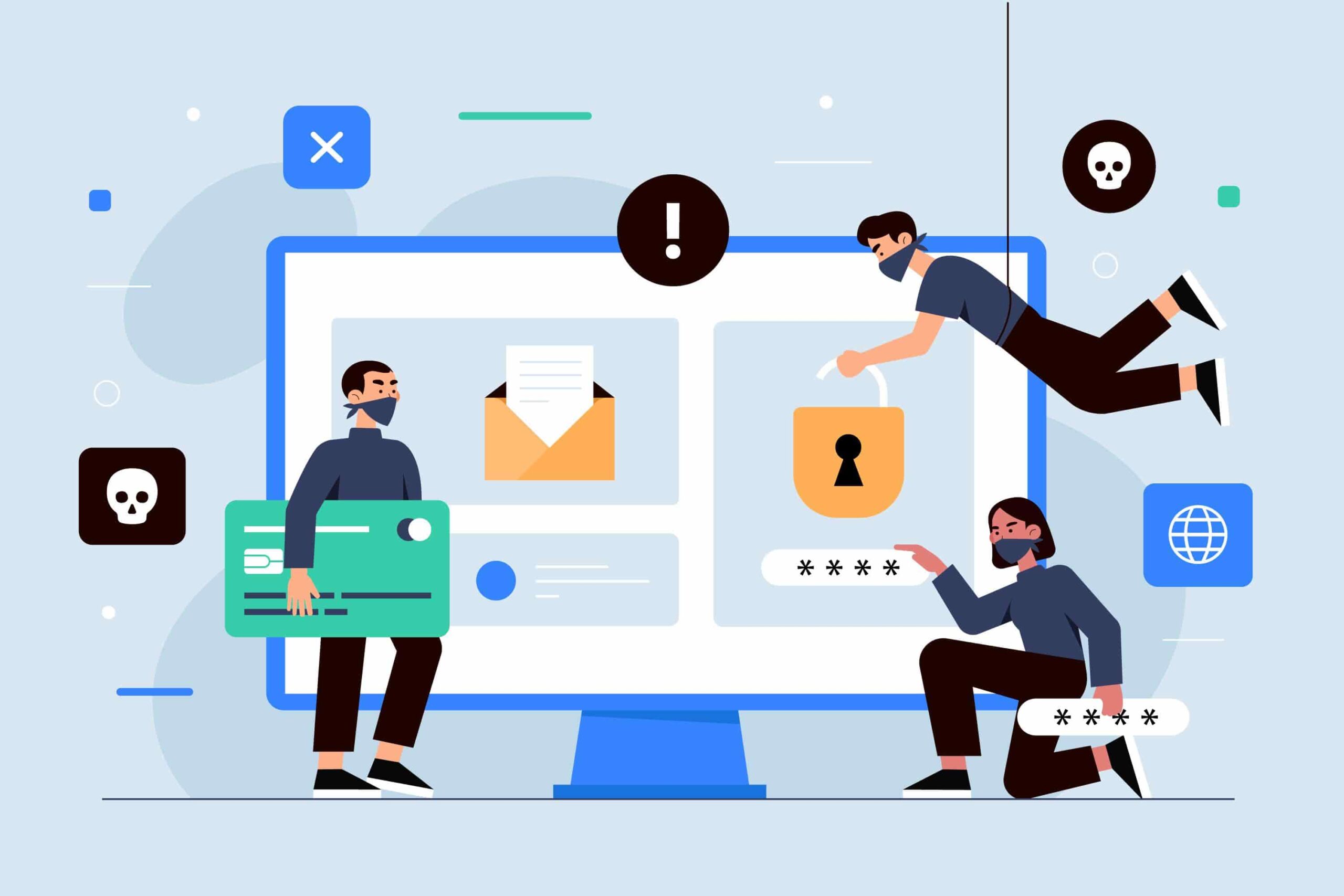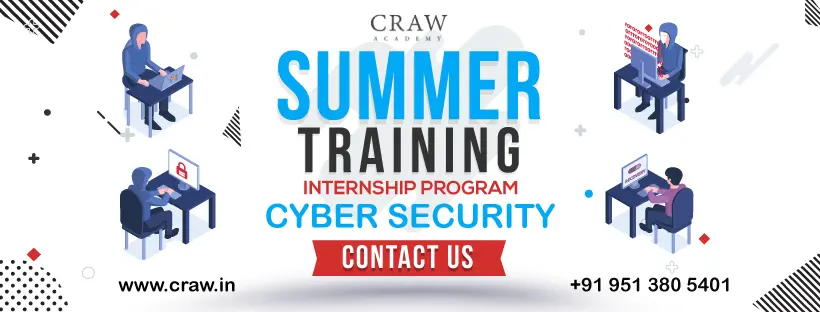The Role of Human Factors in Cybersecurity | Craw Security

The Role of Human Factors in Cybersecurity | Craw Security
The Role of Human Factors in Cybersecurity
This article will help you to find the real reasons for the role of human factors in cybersecurity which develops our thinking toward the need to improve knowledge and skills in cybersecurity techniques and tools.
Moreover, if you want to become a professional in cybersecurity, then reading this article will help you a lot to understand how things work in cybersecurity. What are we waiting for? Let’s get straight into the topic!
The Human Element in Cybersecurity
Because they are frequently the weakest link in an organization’s defense against cyber threats, human aspects are crucial to cybersecurity.
The psychological, social, and behavioral aspects that affect how individuals interact with technology, information, and security measures are referred to as “human factors.”
Improving cybersecurity requires an understanding of and attention to human issues. The following are some essential components of human factors in cybersecurity:
- Phishing and Social Engineering
Cyberattacks frequently prey on people’s psychological vulnerabilities, like phishing. Attackers trick people into disclosing private information, clicking on nefarious links, or installing malware using social engineering techniques. For cybersecurity, it is essential to recognize and reject these techniques.
- User Awareness and Training
It is crucial to inform staff members about cybersecurity dangers and appropriate practices. Training programs can assist staff in identifying threats, making wise decisions, and adhering to security procedures. An informed workforce is better able to withstand intrusions.
- Password Management
Password sharing, reuse, and weak passwords are frequent problems. The selection and management of passwords are influenced by human factors. These dangers can be reduced by promoting strong, one-of-a-kind passwords and using multi-factor authentication.
- Insider Threats
Employee mistakes or malicious intent might result in serious security vulnerabilities. It’s critical to comprehend human behavior, keep an eye out for anomalous activity, and have clear rules in place to handle internal threats.
- Usability and Security
Users may attempt to bypass security measures if they are extremely complicated or obtrusive, which lowers the system’s security. An issue with human factors is balancing security and usability. Users should experience as little friction from security as possible while yet receiving effective defense.
- Crisis Response and Incident Handling
The importance of human elements increases in the event of a security crisis. To reduce damage, recoup, and prevent further breaches, an effective response and communication are required. Training, well-defined responsibilities, and clear processes can all aid in incident management.
- Cultural and Organizational Factors
The culture of the company may have an impact on cybersecurity. A security-focused culture will promote moral conduct and adherence to security regulations.
- Trust and Privacy Concerns
The systems that people use to share sensitive information must be trusted by them. Human factors influence how people view trust and privacy, and businesses must take these perceptions into account when putting cybersecurity measures into place.
- Human-Centered Design
Human considerations should be taken into consideration while designing cybersecurity tools and interfaces. Interfaces ought to be simple to use, informative, and encouraging of safe conduct.
- Regulatory Compliance
Organizations are required by a number of rules and data protection legislation to handle human factors in cybersecurity. Failure to comply may have legal and financial repercussions.
The Good and The Bad
| S.No. | Good Factors | How? |
| 1. | Improved Security Awareness | Organizations may inform users and workers about cybersecurity threats and effective practices thanks to human factors.
This understanding can encourage a culture that is more concerned with security and enable people to identify and report potential risks. |
| 2. | Adaptability to Emerging Threats | The constantly changing nature of cyber threats is taken into consideration by human factors.
People are able to share knowledge, change security procedures, and swiftly adapt to new attack vectors, creating a dynamic defense against new threats. |
| 3. | Holistic Security Approach | A thorough approach to cybersecurity is ensured by taking human issues into consideration.
In order to build a more effective defense, security solutions must incorporate user behavior and psychology in addition to technical precautions. |
| 4. | Incident Response and Recovery | In the aftermath of an occurrence, human aspects are crucial.
When a security breach occurs, properly trained employees can act in a way that minimizes harm and speeds up recovery. |
| 5. | Enhanced Usability | Usability considerations can be taken into account while designing security systems.
User-friendly security solutions are more likely to be adopted by people, lowering the risk of security policy evasion or non-compliance. |
| S.No. | Bad Factors | How? |
| 1. | Human Error | People are prone to make errors. Human mistake still has the potential to cause security incidents, despite training and awareness.
As an illustration, mistakenly changing security settings or clicking on a phishing link. |
| 2. | Social Engineering | These techniques used by cybercriminals to take advantage of human elements make it difficult to protect against threats that explicitly target human psychology and emotions. |
| 3. | Insider Threats | Insiders who are malevolent or careless are also human factors.
Insiders with access to sensitive information have the potential to do a lot of damage to a company, and it can be challenging to anticipate and stop such behavior. |
| 4. | Complexity and Resistance | Security and usability can be difficult to balance. Users may oppose security measures if they are overly complicated or obtrusive, which could lead to security controls being bypassed and vulnerabilities remaining. |
| 5. | Privacy Concerns | Concerns about privacy may arise while discussing human issues in cybersecurity.
People may be apprehensive about the degree of oversight and management required to reduce dangers, which could result in pushback or reaction against security measures. |
Human Mistakes and Their Costs
In a variety of situations, human error can result in large expenditures, including
- Financial,
- Reputational, and
- Operational Consequences.
Here are 5 examples of how human error costs money in cybersecurity and other areas:
- Data Breaches: Data breaches may be caused by human mistakes, including inappropriate handling of sensitive data or incorrectly configured security settings.
The price of a data breach includes costs for incident response, notifying affected parties, taking legal action, and reputational harm to a company.
Additionally, failure to comply with data privacy laws like GDPR could result in fines and penalties for corporations.
- Downtime and Productivity Loss: Employee errors can lead to system failures, disruptions in operations, and decreased productivity.
For instance, if a worker accidentally clicks on a malicious link in a phishing email, malware may be introduced, causing system downtime while the problem is fixed.
Lost productivity and downtime result in direct financial losses.
- Reputation Damage: Human error can damage a company’s reputation, which can be expensive and difficult to repair.
A data breach or a public error may result in unfavorable media attention, a decline in customer confidence, and fewer commercial opportunities.
- Legal and Regulatory Consequences: For many businesses, adherence to laws and regulations is crucial. Human error may result in violations, which may result in court proceedings, penalties, and litigation.
For instance, if staff members misuse patient information, a healthcare provider may be held accountable for a data breach.
- Training and Remediation Costs: To avoid repeat errors and lessen the effects of previous ones, organizations need to spend money on training, awareness campaigns, and corrective actions.
This covers the price of training staff members on best practices, putting in place security upgrades, and carrying out post-incident analyses.
The Psychology Behind Human Errors
| S.No. | Factors | What? |
| 1. | Cognitive Biases | Cognitive biases, such as confirmation bias and overconfidence, which can cause people to ignore or misinterpret facts, are a common cause of human errors. |
| 2. | Fatigue and Stress | Errors are more likely to occur when decision-making and focus are impaired by psychological factors like exhaustion and high-stress levels. |
| 3. | Inadequate Training | Errors might occur as a result of improper training and knowledge because people may not comprehend the required protocols or procedures. |
| 4. | Situational Factors | Errors can be influenced by the surroundings, distractions, and multitasking; for instance, interruptions can divert attention and result in blunders. |
| 5. | Memory Limitations | Errors might happen owing to forgetfulness since the human memory is imperfect, especially when doing challenging or time-consuming jobs. |
Cognitive Overload
When discussing human issues in cybersecurity, the term “cognitive overload” is used to describe the extreme mental strain that comes with handling complicated security duties or information.
Because people may find it difficult to understand and recall important information, this overload could compromise security and result in mistakes.
The efficiency of cybersecurity can be improved by creating user-friendly security technologies and offering proper training.
Social Engineering Tactics
Social engineering techniques are deceptive methods employed by evil people to trick and take advantage of others. These strategies prey on the psychology and conduct of people. Following are five typical social engineering techniques:
| S.No. | Methods | What? |
| 1. | Phishing | Attackers use misleading emails or texts to lure recipients into disclosing sensitive information, including
a) Passwords or b) Financial Information. |
| 2. | Pretexting | This entails fabricating a scenario or pretext in order to win the target’s faith.
Attackers may assume official roles, such as those of IT support or government officials, in order to obtain information. |
| 3. | Baiting | Cybercriminals entice victims to provide personal information or allow the installation of malware on their systems with alluring rewards like free software downloads. |
| 4. | Impersonation | Attackers pose as someone the victim knows or trusts, either in person or online, in order to trick them into divulging sensitive information or taking actions against their better judgment. |
| 5. | Tailgating | By following a legitimate person via a monitored access point, an attacker can enter a secure institution uninvited in this concrete instance of social engineering. |
Importance of Continuous Learning
To advance personally and professionally, one must always learn new things. Here are the top 5 justifications on why continuous learning is crucial:
- Adaptation to Change,
- Skill Enhancement,
- Problem-Solving Abilities,
- Career Advancement, and
- Personal Enrichment.
Mitigating Human Errors in Cybersecurity
Enhancing an organization’s overall security posture requires minimizing human error in cybersecurity. Here are 5 methods to lessen and prevent human error:
| S.No. | Mitigation Technique | How? |
| 1. | User Training and Awareness | All staff should receive thorough cybersecurity training that emphasizes the value of security procedures and raises knowledge of typical threats like
a) Phishing and b) Social Engineering. |
| 2. | Strong Access Controls | Put in place stringent access restrictions to make sure that workers only have access to the systems and data they need to perform their jobs.
The potential impact of mistakes and insider threats is thereby reduced. |
| 3. | Multi-Factor Authentication (MFA) | Make MFA a requirement for accessing vital accounts and systems.
Even if login credentials are accidentally revealed, MFA offers an additional layer of security, making it more difficult for attackers to infiltrate accounts. |
| 4. | Regular Security Updates and Patching | To lessen vulnerabilities that could be exploited due to unpatched software, which is a frequent entry point for attackers, keep systems and software up to date with the most recent security patches. |
| 5. | Monitoring and Incident Response | Keep an eye out for unexpected activity on your systems and have an incident response plan in place.
This makes it possible for enterprises to quickly identify and respond to security problems, hence reducing their impact. |
Creating a Culture of Security
To maintain a strong cybersecurity posture, an organization must instill a culture of security. Moreover, to promote such a culture, follow these 5 crucial steps:
- Leadership Commitment: Security commitment from the leadership must be active. Top executives set the tone for the entire firm when they prioritize and adhere to security rules.
- Education and Training: All staff should get regular security awareness and training programs. Ensure that everyone is aware of the hazards, recommended procedures, and their part in upholding security.
- Clear Policies and Procedures: Create and disseminate accessible, unambiguous security policies and procedures. Employees need to be aware of what is expected of them as well as the repercussions of breaking the rules.
- User-Friendly Security Measures: Implement user-friendly security measures that don’t place an undue load on staff. If security is too obtrusive or complicated, people may try to get around it, eroding the culture of security.
- Continuous Monitoring and Improvement: regularly evaluate the organization’s security posture, take lessons from mishaps and near-misses, and implement changes.
A security-conscious culture is one that adapts and changes when new risks and difficulties arise.

Integration of AI and Human Insights
Across many domains, the combination of artificial intelligence (AI) with human insights can produce considerable benefits. Here are the top five benefits:
| S.No. | Integration of AI and Human Insights | How? |
| 1. | Enhanced Decision-Making | AI can quickly evaluate enormous amounts of data, giving human decision-makers insightful knowledge to help them make more reasoned, data-driven judgments. |
| 2. | Efficiency and Productivity | Artificial intelligence (AI) automates routine operations, freeing up human workers to concentrate on more difficult and innovative areas of their jobs, ultimately improving production and efficiency. |
| 3. | Personalization | Personalization of services and experiences is made possible by the integration of AI with human insights, increasing customer pleasure and engagement in industries like
a) Marketing and b) E-Commerce. |
| 4. | Improved Predictive Analysis | Supply chain management and healthcare are two examples of how AI may be used to process historical data and human insights to develop predictive models that more precisely foresee trends and outcomes. |
| 5. | Problem-solving | By giving new data and insights, AI can support complicated problem-solving, facilitating human progress in fields like
a) Scientific Research and b) Cybersecurity. |
The Future of Human Factors in Cybersecurity
As technology advances, human considerations in cybersecurity will continue to be of the utmost significance.
This entails putting more of an emphasis on user-centered security, utilizing more sophisticated training techniques, and incorporating AI and machine learning for behavioral analysis to counter emerging threats.
When developing and putting into practice successful cybersecurity tactics, human behavior, and psychology will continue to be important factors.
Training and Awareness
If you want to deal with Real-World Training Scenarios while having professional Technical Solutions for the people you want to work with, then you need training and awareness programs which are often organized by several organizations and institutions for various purposes.
This also helps IT Aspirants to choose their path effectively in cyberspace in the IT Sector. Guidance from professionals cheers them up with utmost confidence. Thus, you can find a reputed institute that could offer you the needed and necessary training with the latest cybersecurity tools available in the market.
That will help you to be up-to-date with the latest tech and knowledge to provide better cybersecurity solutions to enhance secure measures. Let’s move forward!
Conclusion
In a few decades, humans and androids have connected to each other much faster than in the human evolution period. This means that we need to be prepared for the best or the worst in case of changes in the tech and future.
If you really want to learn more about “the role of human factors in cybersecurity,” then you can definitely get in contact with Craw Security. It offers you a “1 Year Diploma Course in Cyber Security Training in Delhi,” a customized training and certification program for beginners and IT Aspirants who want to upgrade their skills and knowledge related to cyber security. What are you waiting for? Contact, Now!
















